B'LOG: Welcome to our Lara Barut Collection Winemaker's event Ms. Sibel. We are glad to see you at our hotel and talk about your 96-year-old Doluca brand.
As your profession comes from your family, you have been in the winemaking industry since you were born. You probably played hide and seek in the vineyards. Vine leaves probably served as your toys. We know that wine is a lifestyle for you.
How would you describe it? Apart from business, what does wine mean for you?
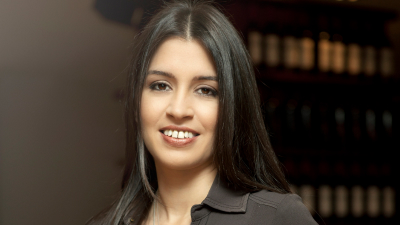 SIBEL KUTMAN: Actually, wine has multiple meanings in my life. Yes, I was born into it, I grew up in it. I had no life without wine. When I was a kid, my brother and I were assigned tasks. He was measuring the Brix. And then came our youth, university and so on. I was also interested in modern dance for a while. But then I also studied wine and got back to it. Yes, wine is my business. But it has been more than just a drink, a living being for us as we witness how it comes out. It is something that naturally exists. It is squeezed and it goes through multiple stages. You turn it into something much more enjoyable than it is at the beginning. Yes, it transforms but continues to exist. Wine exists until it is consumed. It goes through various experiences. It is exposed to heat. It is filled into bottles, which is followed by packing. It is placed on the shelves. And it wonders when it will be rewarded for its efforts. Wine is a lifestyle. I am so glad to have wine and run this business. Taking into consideration the new variations, wine is an endless world.
SIBEL KUTMAN: Actually, wine has multiple meanings in my life. Yes, I was born into it, I grew up in it. I had no life without wine. When I was a kid, my brother and I were assigned tasks. He was measuring the Brix. And then came our youth, university and so on. I was also interested in modern dance for a while. But then I also studied wine and got back to it. Yes, wine is my business. But it has been more than just a drink, a living being for us as we witness how it comes out. It is something that naturally exists. It is squeezed and it goes through multiple stages. You turn it into something much more enjoyable than it is at the beginning. Yes, it transforms but continues to exist. Wine exists until it is consumed. It goes through various experiences. It is exposed to heat. It is filled into bottles, which is followed by packing. It is placed on the shelves. And it wonders when it will be rewarded for its efforts. Wine is a lifestyle. I am so glad to have wine and run this business. Taking into consideration the new variations, wine is an endless world.
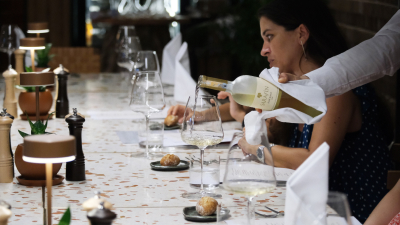 B'LOG: You cannot get the same yield every year from every product. Same also applies for olive. In some years, the yield is higher. Does it also apply for grapes?
B'LOG: You cannot get the same yield every year from every product. Same also applies for olive. In some years, the yield is higher. Does it also apply for grapes?
S.K.: Of course. Climate is the main factor for wine. Factors such as the amount of rainfall, how much sunlight is received, the extent of wind, and the temperature differences between day and night affect the nature of the grape. For example, different climatic conditions exist in Thrace and Erzurum. Different things happen in the vineyard on this side and other side of the slope. So many things change every year. Sometimes the yield is higher or lower. Sometimes drought occurs and sometimes the vine likes drought. It locates its roots deeper in soil and becomes stubborn. This is how delicious wines come out. So it requires such a delicate balance.
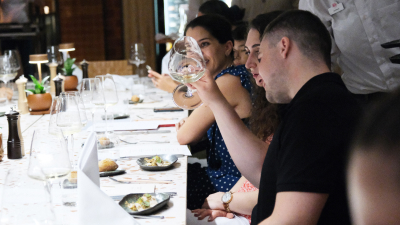 B'LOG: Has there been a bad year during your journey of wine?
B'LOG: Has there been a bad year during your journey of wine?
S.K.: No there has not been a bad year as we collect the grapes from different regions. When drought occurs in a region, the other regions do not suffer from drought. So we collect the grapes from those regions. So, we do not experience such a thing as no drought affecting whole Turkey has occurred. But if I am not wrong, we had the earliest harvest in history in 2018. It was an extremely hot summer, and early harvesting is not something desired. Because it means that that the fruits have rapidly ripened. When the ripening extends over a longer period of time, a favorable change also occurs in the taste. If it ripens within the required time with a more natural sugar level, then the taste of the wine is much more different.
We, as the tasters, i.e. consumers, do not know it very well. How many years does it take for wine to truly become wine? For example, some wines are more expensive. Does the aging level of the wine also play an effective role in determining the price?
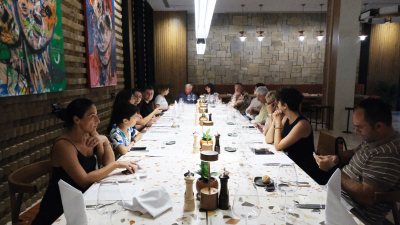 B'LOG: What is aged wine? How many types of wines do you have?
B'LOG: What is aged wine? How many types of wines do you have?
S.K.: Not every wine made across the world is made for aging. It is bottled for consumption the year it is offered for sales and put on the market. Not all the grapes nor all wines age. In other words, you need to know from which grape and with what intention the wine has been made and whether it has been made for aging or for immediate consumption or not. But it is better to consume white wine and rosé wine within 3-5 years after they are made. Because white wine and rosé wine begin to lose their fruity aromas as they age. Due to the nature of grape, red wine ages better. So you can give red wine a little longer lifespan.
We have more than 60 wines.
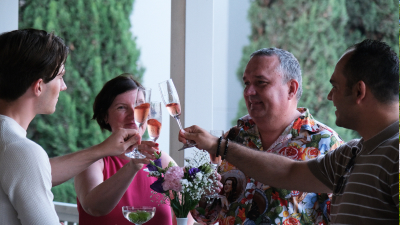 B'LOG: How is wine made last longer? How is the color determined?
B'LOG: How is wine made last longer? How is the color determined?
S.K.: There is a substance called tannin in the seeds and skins of grapes. We avoid immediately squeezing of red grapes after they are received and sorted out in the facility. We let them wait for a while with seeds and pulps. We mix them for a certain period of time. The longer they wait, the more they take on the color of the skin and seed. When they are kept for a shorter time, then they will be pink. That is the rosé wine. So, during waiting, the tannin contained in the skin mixes into the water. And it gives the wine its color. What gives the aftertaste when drinking that wine is tannin, which flavors and protects the wine against oxidation.
Recommended For You
The Best Local Flavors of Anta...
Known as the jewel of the Medi...
Read MoreThe Most Popular Local Dishes ...
Gaziantep is known as one of T...
Read MoreQuick and Tasty: Open-Faced Br...
After a long, busy day, your t...
Read More